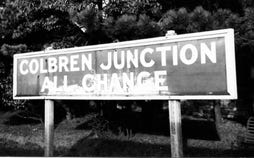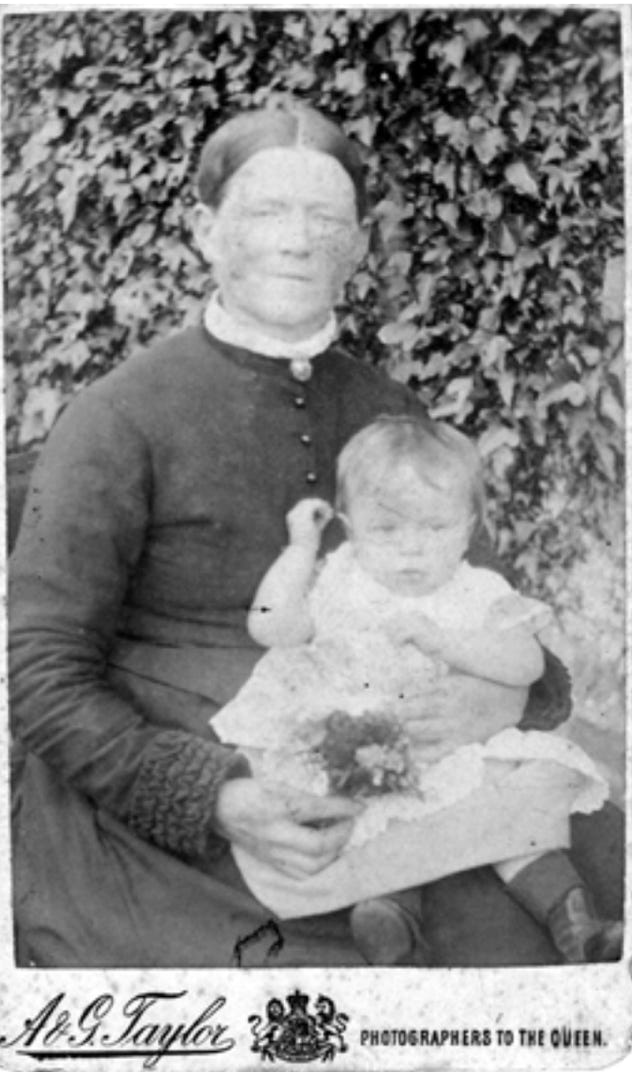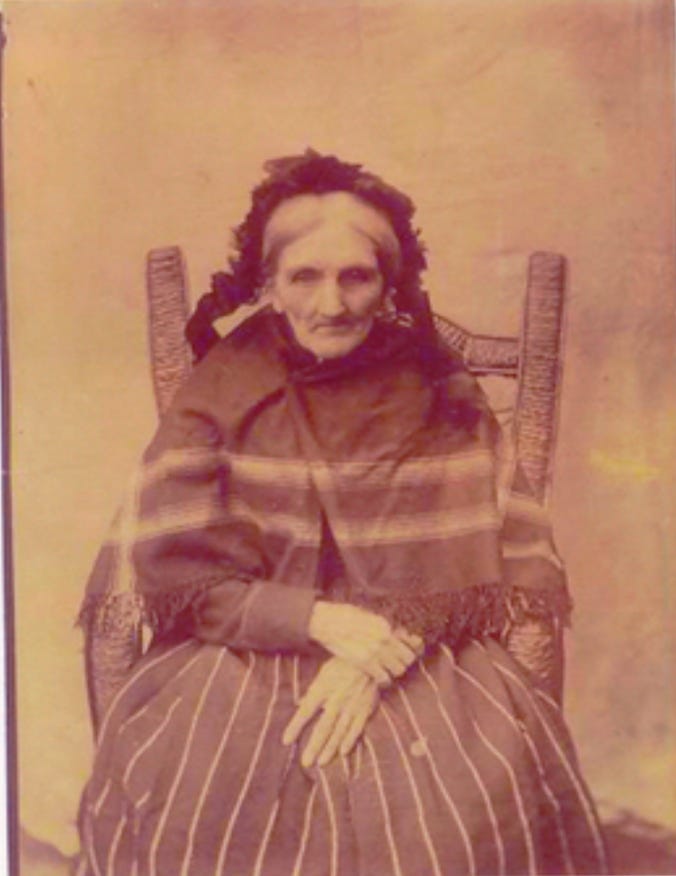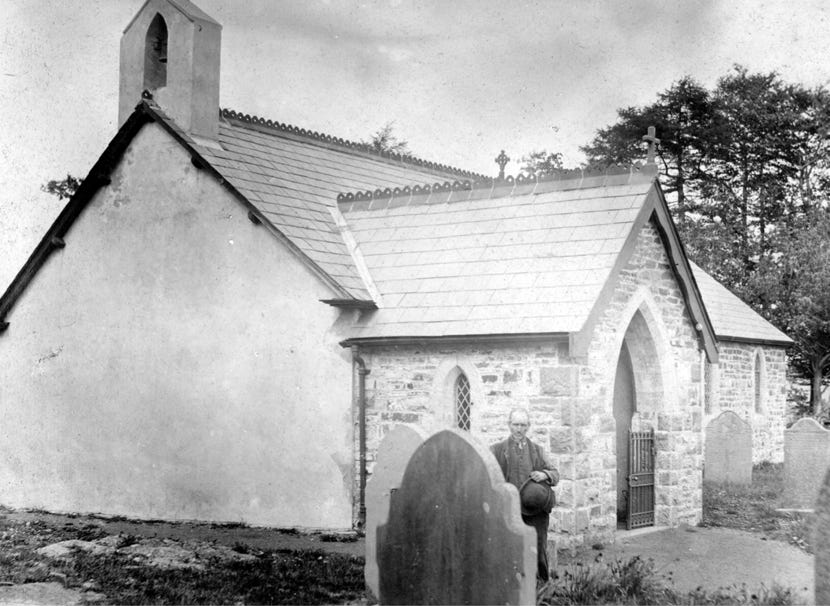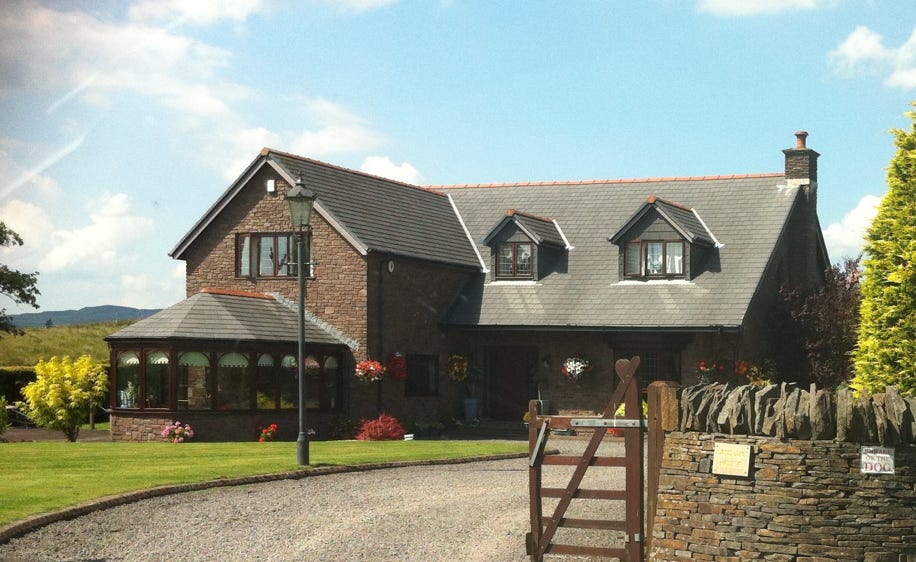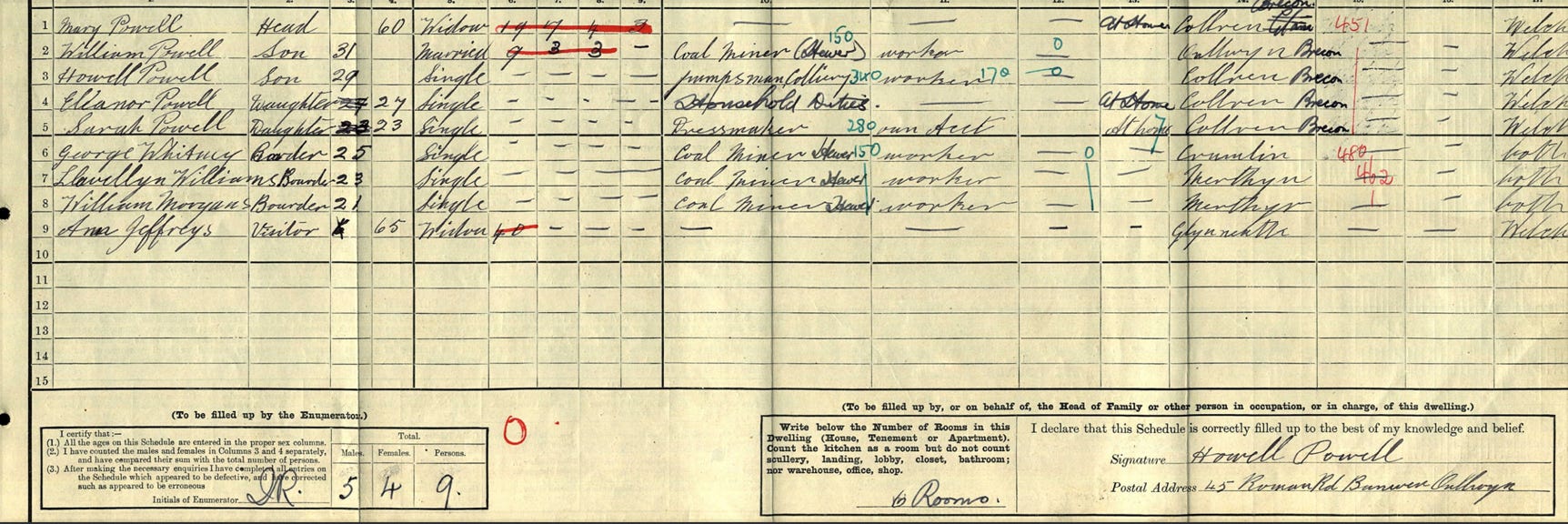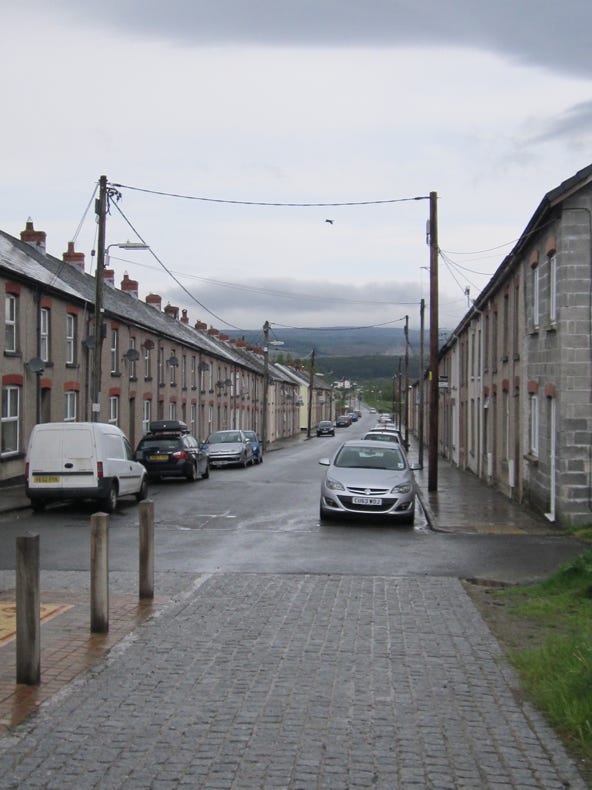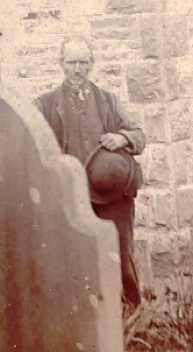The Jeffreys family in Breconshire merits more attention in its own right as it is an old-established and far-reaching family, at one point among the largest landowners in Breconshire. Here, in the Coelbren area, we probably have some minor descendants, fifth sons of sixth sons, far-removed from such riches and the particular family of interest to us for the time being revolves around Howell Jeffreys (1813-1879) and his wife Elizabeth (Benjamin). Originally this branch of the Jeffreys can be traced back to the important 16th century farm of Ystradfawr, in Ystradgynlais, where it is described as “the earliest gentry house in the district and the most interesting”. Indeed there are several connections through marriage between the Jeffreys and other locally important “minor gentry” families such as the Powells and the Prices (Glynllech). In 1861 Howell Jeffreys' family was living at Corslwyn du Uchaf just to the south of what would later become Coelbren village and three of the Jeffreys children from this family married people of direct interest to us in this study: one to a Jones (here), one to a Morgan, and one to a Lewis. Here is another pole around which alliances between Coelbren families were made, further cementing and embellishing complex intergenerational links.
In this case, it was eldest son David Howell Jeffreys who married Ann Jones. Three years after their marriage, they can be found in 1871 at Camnant House, he recorded as a Coal-Miner, although he would always have combined this with small-scale farming, with their first child Mary shown, aged 1. They clearly intended to stay here as the West Glamorgan archives in Swansea holds the following document:
“Counterpart lease for 99 years from 25 Mar. 1875 for £2 5s annual rent dated 1876; Capel Henry Miers and Henry Nathaniel Miers of Ynispenllwch, esq., Lewis Thomas Lewis of Cadoxton Lodge, esq., Anthony Hanmer Miers of Llwyncyntefin, Breconshire, Anna Jane Miers of Llwyncyntefin, widow and David Howell Morgan of Neath, esq. to David Howell Jeffreys of Cadoxton-juxta-Neath, coal-miner; Part of Toncastell Farm (73p) in the parish of Cadoxton-juxta-Neath for building a house, situated in the bend of a brook, beside an old Roman Road.”
There was both a Roman fort here and a marching camp here in the first century AD – shown by “Gaer” on maps (or “Caer” as in Caerleon) and the boundaries are still clearly visible from the air today. This occupation still resonates in the names of some of the farms – Tonycastell, land of the fort - and, close by, Tonyfildre – land of the soldiers. So perhaps it is wrong to over exaggerate the isolated nature of the area: along with the Roman Camp went Sarn Helen – the Roman Road, leading from Neath to Brecon. In the first century, Banwen would have been a small but bustling and important staging post along the road and who knows how many Romans – of whatever nationalities the no doubt conscripted soldiers were – stayed behind to add a little exoticism to our future gene pool. The transport link from Neath to Brecon would have been first rate for its time and more direct than now.
Jeff Alexander writes, "In around 1890, Daffi entered an essay into an eisteddfod held in Penycae School about the area of “Cwarter Llech” and the major families including the Powells and Prices of Glynllech Isaf and Glynllech Uchaf and the growth of the Baptist movement. Most of Daffi’s siblings lived on small farms in the area – including, Blaenllech, Pantywal, Tanyfer, Tonspyddaden, and Rhydffosddu."
The Jeffreys family is visible at Camnant House in 1881, 1891 and 1901. Before the 1911 census, father David Howell died in 1909 and the property passes, rather predictably, to the couple’s only son, also David.
Below: funeral card for David Jeffreys, 1909
